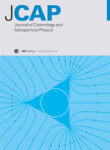 Cosmogenic Backgrounds in Borexino at 3800 m water-equivalent depth
Cosmogenic Backgrounds in Borexino at 3800 m water-equivalent depth
Journal of Cosmology and Astroparticle Physics, Volume 2013, August 2013
Cit.: G. Bellini et al JCAP08(2013)049
Published 27 August 2013
[doi:10.1088/1475-7516/2013/08/049] (preprint on arXiv)
Abstract
The solar neutrino experiment Borexino, which is located in the Gran Sasso underground laboratories, is in a unique position to study muon-induced backgrounds in an organic liquid scintillator. In this study, a large sample of cosmic muons is identified and tracked by a muon veto detector external to the liquid scintillator, and by the specific light patterns observed when muons cross the scintillator volume. The yield of muon-induced neutrons is found to be Yn = (3.10±0.11)·10−4 n/(μ·(g/cm2)). The distance profile between the parent muon track and the neutron capture point has the average value λ = (81.5±2.7) cm. Additionally the yields of a number of cosmogenic radioisotopes are measured for 12N, 12B,8He, 9C, 9Li, 8B, 6He, 8Li, 11Be,10C and 11C. All results are compared with Monte Carlo simulation predictions using the FLUKA and GEANT4 packages. General agreement between data and simulation is observed for the cosmogenic production yields with a few exceptions, the most prominent case being 11C yield for which both codes return about 50% lower values. The predicted μ-n distance profile and the neutron multiplicity distribution are found to be overall consistent with data.